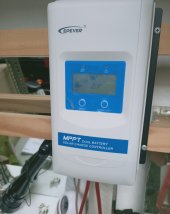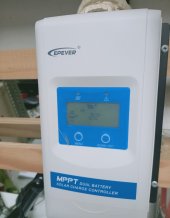I have two 12V 120Ah AGM batteries.
The attached image shows the arrangement.
#1 - positive and negative to the Inverter.
#2 - positive and negative to the charge controller.
The Battery icon (on controller display) shows the battery as being full. In certain situations the battery level drops pretty rapidly. E.G, the only load was the Inverter, which was plugged into a stereo, which was on standby (~24w). It was cloudy, but I had around 30w coming in.
Why does the battery level still drop, and so fast? What have I messed up or overlooked here?
The attached image shows the arrangement.
#1 - positive and negative to the Inverter.
#2 - positive and negative to the charge controller.
The Battery icon (on controller display) shows the battery as being full. In certain situations the battery level drops pretty rapidly. E.G, the only load was the Inverter, which was plugged into a stereo, which was on standby (~24w). It was cloudy, but I had around 30w coming in.
Why does the battery level still drop, and so fast? What have I messed up or overlooked here?





